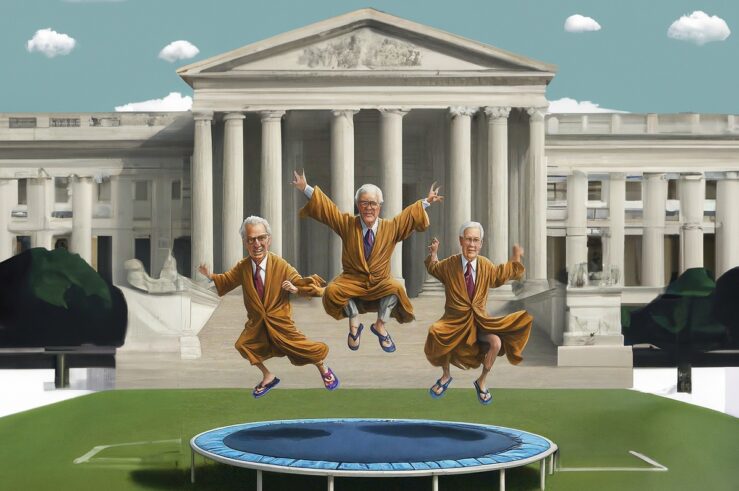I called it last week. Today’s NYT reports that Princeton has accepted Harvard’s invitation to join it in eliminating early admissions. In addition, the presidents of eleven elite liberal arts colleges (including Swarthmore, Williams, Barnard, and Amherst) have met to discuss, among other things, collectively eliminating their early admission programs and reducing merit-based aid.
Just a friendly reminder, guys:
You are competitors. This is not a joint venture. You are agreeing to reduce competition by eliminating a service option that your customers desire and that would be available but for your agreement not to compete. That’s not good.
Now, each of you may decide that the early admissions program is bad for your school because, for example, it tends to produce a class of homogeneous, privileged students who blow off their last semester of high school. If you reach this conclusion and you want to change your admissions protocol unilaterally, then by all means do so. But there’s no legitimate reason for you to agree among yourselves to eliminate competition.
Make no mistake — that is what the elite schools are doing. As Reed College president Colin Diver said with respect to merit aid: “Do we really need to be part of this arms race in merit aid? … I talk to lots of presidents who would love to disarm, but they’re afraid to do it unilaterally.”
Of course they are. When any business decides to stop responding to customers’ demands, it runs the risk of losing business to its rivals unless it can get them, too, to stop responding to customers’ demands. Unfortunately, limiting competition in this fashion usually isn’t good for customers.
The presidents of these elite schools are less confident about competition’s benefits. As Amherst president Anthony Marx remarked, “Competition is important and strengthens us and can spread our net. But if it’s designed to drive us in a way that’s self-serving and not in society’s interest, then that’s a problem.” That’s an awfully big exception there, Mr. Marx. Pretty much all competition is designed to be self-serving rather than public interest-promoting. To quote Adam Smith: “It is not from the benevolence of the butcher, the brewer, or the baker that we expect our dinner, but from their regard to their self-love, and never talk to them of our own necessities but of their advantages.”
The elite colleges’ idea that they may limit competition among themselves in order to preserve the “public interest” seems to derive from a conclusion that the competition at issue is somehow “ruinous.” While the notion of ruinous competition has a long history in antitrust jurisprudence, it’s certainly in decline. As the Supreme Court remarked in the Professional Engineers case:
The Sherman Act reflects a legislative judgment that ultimately competition will produce not only lower prices, but also better goods and services. “The heart of our national economic policy long has been faith in the value of competition.” … The assumption that competition is the best method of allocating resources in a free market recognizes that all elements of a bargain – quality, service, safety, and durability – and not just the immediate cost, are favorably affected by the free opportunity to select among alternative offers. Even assuming occasional exceptions to the presumed consequences of competition, the statutory policy precludes inquiry into the question whether competition is good or bad.




